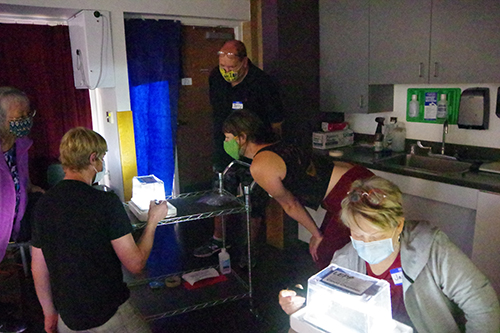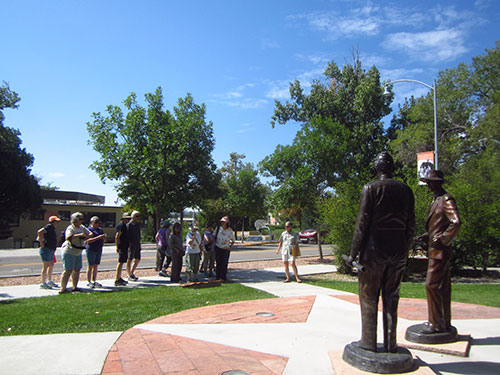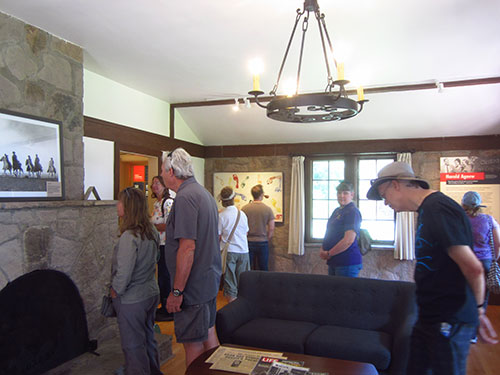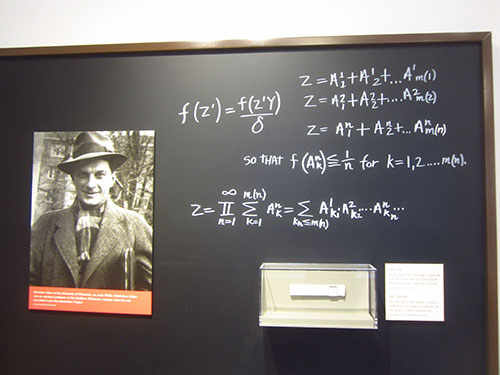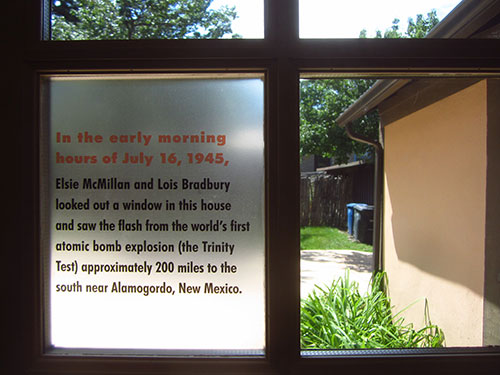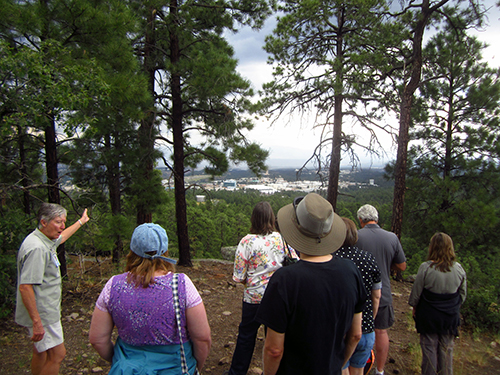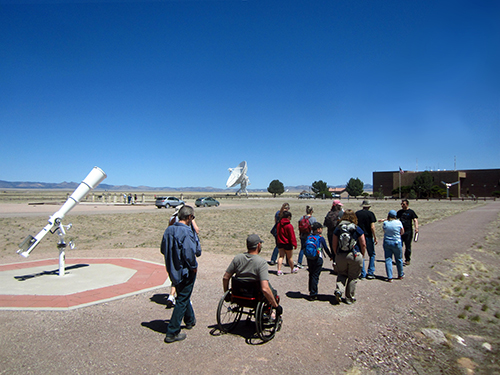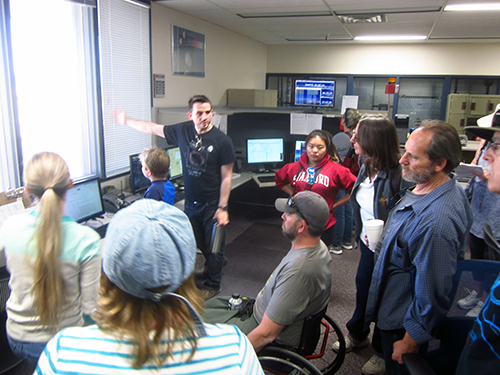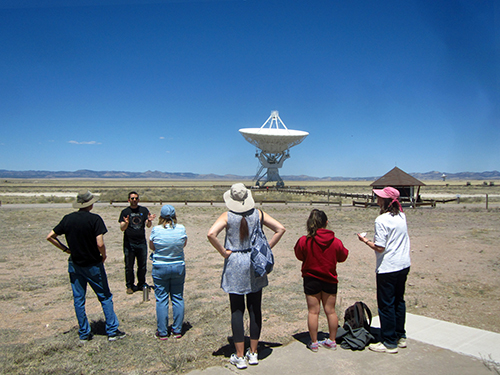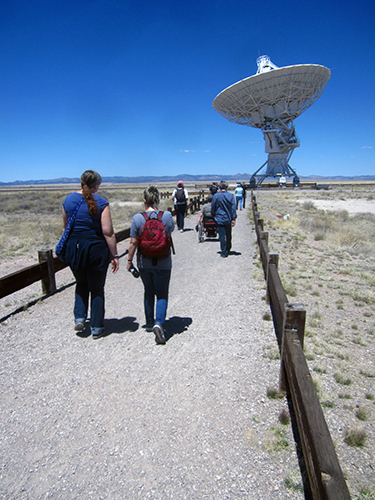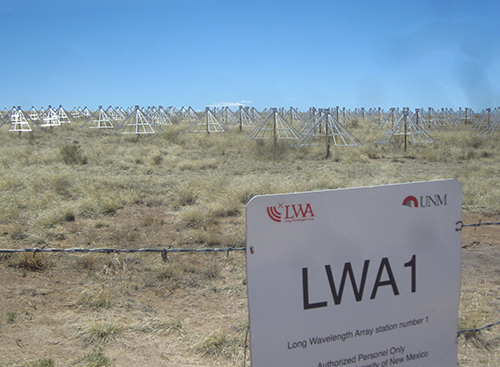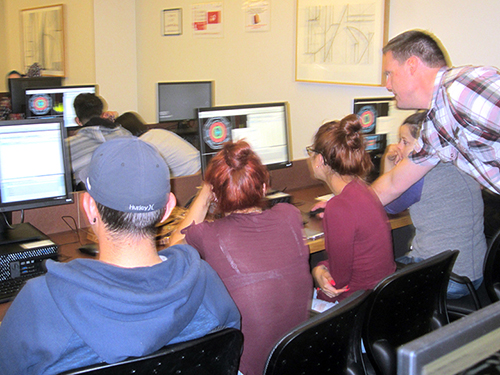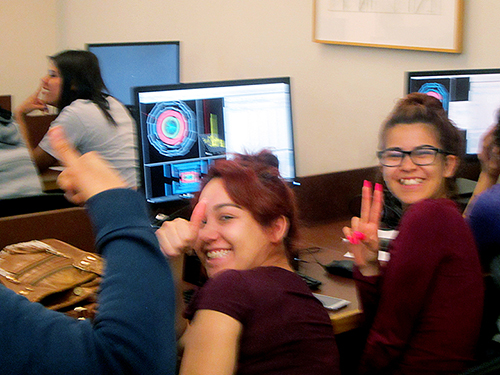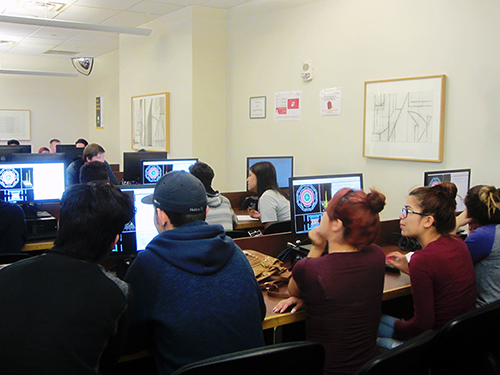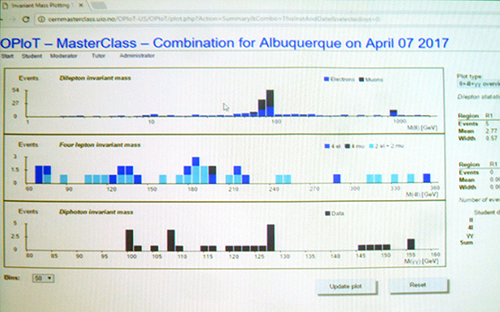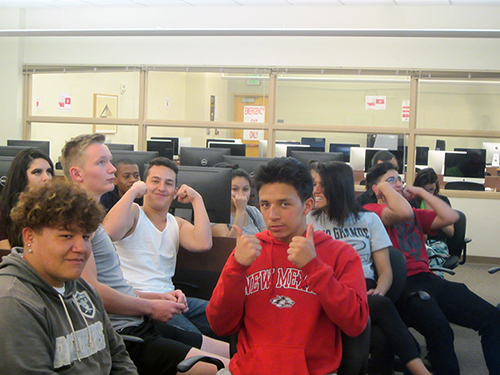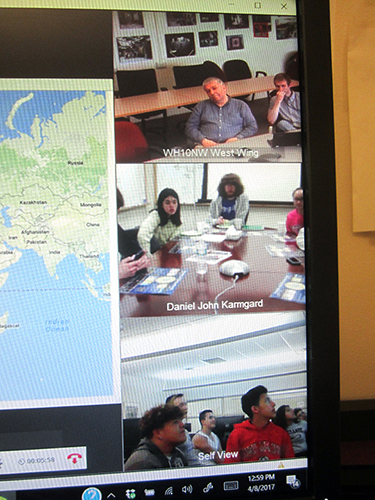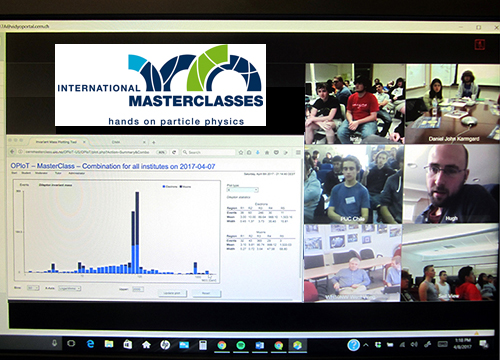STEM Workshop for Teachers
September 19, 2019
Teachers viewing particle tracks appearing in real time in a cloud chamber detector.
QuarkNet@UNM hosts a tour of the Los Alamos Scientific Heritage Sites
September 7, 2019
On September 7, 2019, QuarkNet@UNM, a chapter of the national QuarkNet network, held an outreach and educational event for New Mexico STEM teachers. QuarkNet is a long-term professional development program, funded by NSF and DOE, that gives STEM teachers opportunities to encounter science outside the classroom and bring those experiences to the students inside the classroom. QuarkNet@UNM, headed by Prof. Sally Seidel, is one of 52 chapters across the US that organize events for their region. The September 7 event involved a technical and historical tour of science heritage sites in Los Alamos, NM. Teachers from nine schools in the Albuquerque and Los Lunas districts participated.
UNM QuarkNet hosts VLA tour for teachers
Saturday, May 5, 2018
QuarkNet@UNM hosted teachers from four Albuquerque schools on a technical tour of the Very Large Array and Long Wavelength Array on May 5, 2018 at the Plains of San Agustin site, east of Socorro, NM. The tour was led by UNM astrophysics doctoral candidate Joseph Malins and UNM physics professor (and QuarkNet@UNM director) Sally Seidel.
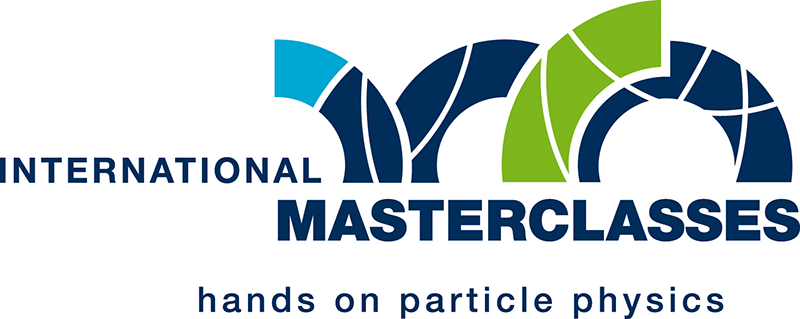
Albuquerque high school students and teachers' particle physics immersion
Saturday, April 8, 2017
UNM Student Union Building
Physics at the most fundamental level - the smallest and most basic building blocks of matter - is an exotic world. But after an introductory talk and an hour working with data from CERN, students gained insight about the fundamental matter particles and the forces between them. The students were introduced to particle physics, experiments and detectors by an active particle physics researcher. After having lunch with lecturers and tutors, they worked on their own with data from the LHC collider at CERN, then video conferenced to discuss and compare their results with students from other countries and with the moderators at CERN.
